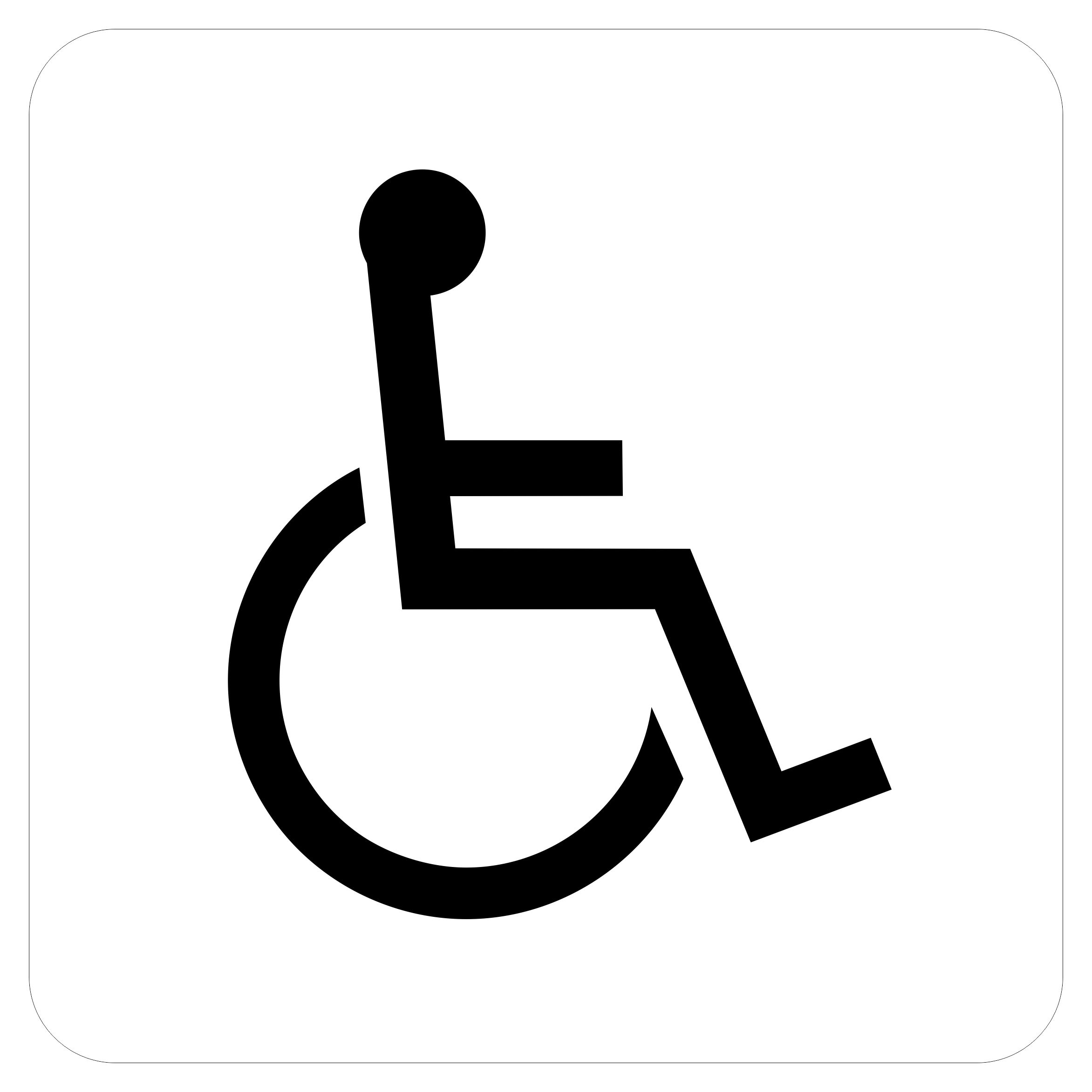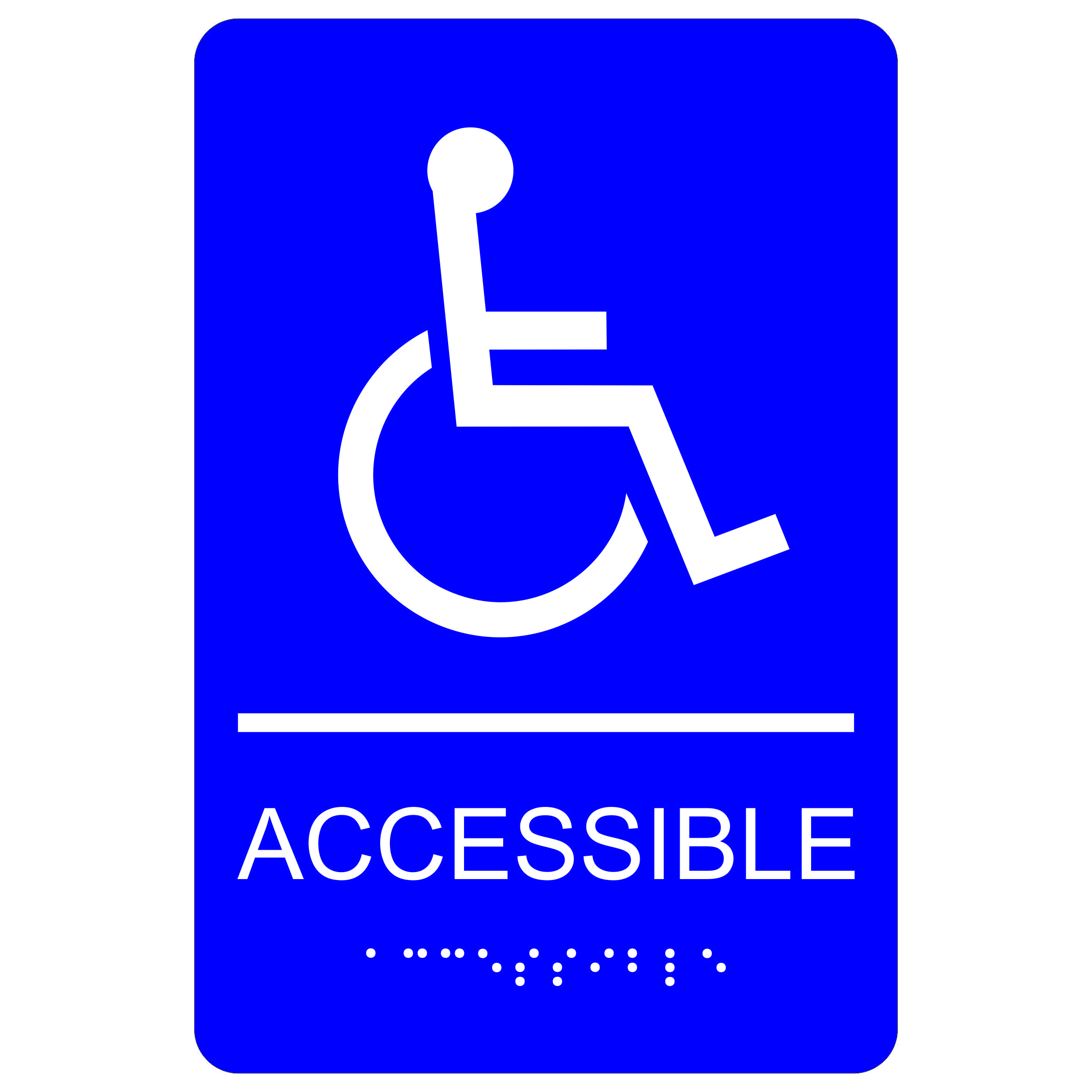ADA Signs: Ensuring Availability and Conformity in Public Spaces
ADA signage plays an indispensable duty in guaranteeing availability and compliance within public areas, dramatically contributing to a comprehensive environment for individuals with handicaps. By adhering to ADA requirements, signs not just promotes navigation however additionally underscores an organization's commitment to diversity and equal rights. As we check out the subtleties of ADA signs, from responsive functions to design ins and outs, it's essential to think about just how these elements coalesce to promote the civil liberties of all users. What are the common risks companies encounter in maintaining conformity, and how can future patterns in signage remain to drive access forward?
Significance of ADA Signage
In modern-day culture, the relevance of ADA signage extends beyond simple compliance with lawful mandates to symbolize a commitment to inclusivity and access for all individuals. These signs are important in producing atmospheres where individuals with specials needs can browse public spaces with the same ease and self-reliance as those without disabilities. By supplying standardized and clear details, ADA signage ensures that every person can access centers, services, and details without barriers.
The relevance of ADA signage hinges on its capacity to improve the lifestyle for individuals with impairments by promoting equal gain access to. It gets rid of the obstacles that may otherwise prevent their capability to get involved fully in community life. These indicators serve as noticeable signs of a company's devotion to diversity and equality, mirroring broader societal worths that champion the civil liberties and dignity of all people.
Additionally, ADA signage plays an important role in public security. By leading individuals to departures, washrooms, and various other necessary facilities, it makes certain that all individuals, despite physical capacity, can evacuate safely during emergencies. In recap, ADA signs is not just a regulative demand yet a powerful tool for promoting a inclusive and equitable culture.
Crucial Element of Compliance

Positioning is essential; signs must be mounted in areas that are conveniently noticeable and obtainable. Normally, signs needs to be installed between 48 and 60 inches from the ground to make sure ease of access for both standing and wheelchair customers. Responsive components, such as Braille, are crucial for individuals with aesthetic disabilities, supplying important details in a non-visual layout.
High-contrast shades between the text and background are necessary to enhance readability for individuals with reduced vision. The ADA mandates certain comparison proportions to guarantee clarity. In addition, personality dimension is an essential consideration, with minimal height needs dictated by the checking out range to ensure readability from various angles.
Design Considerations for Access
Creating easily accessible signs calls for a precise approach to ensure it satisfies the needs of all customers, specifically those with disabilities. This entails taking into consideration numerous layout components that enhance readability and functionality. Trick aspects include the selection of font style, color comparison, and tactile functions. Typefaces must be sans-serif, with basic and clear letterforms, to promote simple reading. The size of the text is just as important, with ADA standards advising a minimal elevation based on seeing distance to make sure legibility.
Contrasting shades in between message and history are crucial for exposure, especially for people with visual problems. Furthermore, responsive elements, such as Braille and elevated characters, are vital for individuals who are blind or have reduced vision.
Moreover, the placement of signage plays a considerable duty in access. Indicators ought to be mounted in areas that are easily obtainable and unhampered. Making sure that signage is mounted at suitable heights and angles makes it possible for all individuals, consisting of those using wheelchairs, to engage with them successfully.
Common Errors to Stay Clear Of

One more widespread mistake is the inaccurate placement of signage. ADA standards define specific height and location needs to make certain that indications are obtainable and easily noticeable by all this people, including those utilizing wheelchairs. Ignoring these standards not just hampers availability but likewise takes the chance of non-compliance with lawful standards.
In addition, insufficient comparison between message and background is a regular oversight. Ample contrast is important for readability, especially for individuals with reduced vision. Designers often select colors that are visually enticing but lack the required comparison, providing the text hard to determine.
Lastly, some designers fail to incorporate tactile aspects, such as Braille, which are essential for people that are blind. Omitting these functions not just leads to non-compliance with ADA policies but additionally limits gain access to for a sector of the population that relies on tactile info.
Future Trends in Signage
Developments in innovation and increasing understanding of inclusivity are shaping the future patterns in signs layout. As culture becomes more conscious of diverse needs, the integration of smart innovations into signage is gaining traction. Digital signage, for example, is evolving to consist of real-time updates and interactive attributes, which can be essential in offering dynamic information in public spaces. These indicators usually incorporate touch screens or gesture-based controls, enabling customers to browse content tailored to their specific needs.
An additional emerging fad is the usage of increased truth (AR) to boost individual experience. AR-enabled signs can overlay digital information onto the physical setting, supplying aesthetically impaired people with auditory or haptic comments. ADA Signs. This modern technology not just enhances ease of access yet also develops an engaging experience for all individuals
Sustainability is additionally a substantial aspect affecting signage patterns. Eco-friendly products and energy-efficient lights solutions are being focused on to align with global environmental objectives. Improvements in products science are leading to the development of more long lasting and weather-resistant signs.
Final Thought
ADA signs plays an essential duty in guaranteeing ease of access and compliance within public spaces by including responsive components, high-contrast colors, and strategic placement. The adherence to ADA requirements not only assists in secure navigation for individuals with specials needs yet additionally signifies an organization's dedication to diversity and inclusivity. By avoiding common errors and accepting future patterns, public areas can remain to advance these values, guaranteeing that the legal rights and self-respect of all individuals are appreciated and link supported.
ADA signage plays Look At This an important function in ensuring ease of access and compliance within public spaces, considerably contributing to a comprehensive setting for people with impairments. As we explore the nuances of ADA signs, from responsive functions to develop complexities, it's essential to take into consideration just how these aspects coalesce to promote the civil liberties of all individuals.In contemporary culture, the value of ADA signage extends past simple compliance with lawful requireds to symbolize a commitment to inclusivity and accessibility for all individuals. By providing standardized and clear information, ADA signs guarantees that everyone can access centers, services, and details without barriers.
ADA signage plays a vital duty in ensuring accessibility and conformity within public spaces by including tactile components, high-contrast colors, and strategic positioning. (ADA Signs)